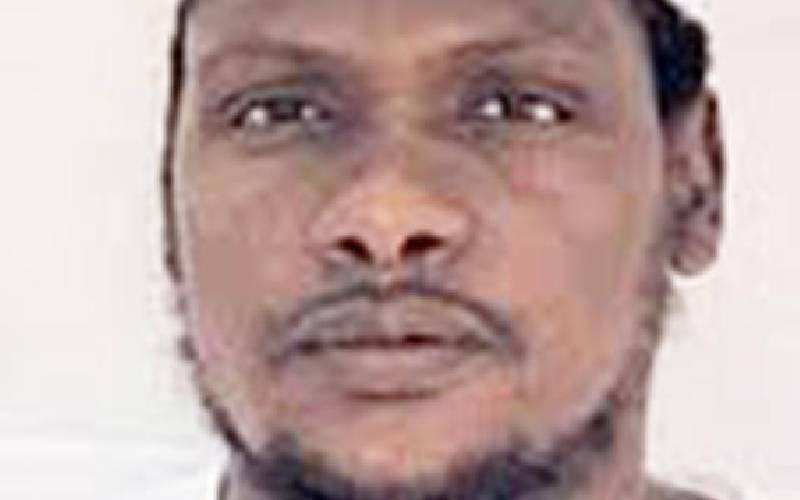Fingerprints are as fascinating as the iris, a part of the eye. Just as the iris, they can be used to identify someone. That is why they are crucial when applying for a national identification card and a Certificate of Good Conduct.
Let’s delve into the science of fingerprints. Fingerprints are the tiny ridges, whorls and valley patterns on the tip of each finger.
They are so unique to every individual, not even twins can have the same set of fingerprints. Actually there is a one in 64 billion chance that your fingerprint will match up exactly with someone else’s.
These prints are preferred as a crucial form of identifying an individual because they are permanent and unique; never change and no two fingerprints are the same.
The history
Before the mid-1800s, the law enforcers relied on their memory to identify previously arrested offenders.
However, this method proved unreliable because the policemen were required to have ‘camera eyes’.
Babylonians were the first to make a significant breakthrough with fingerprints.
They used to press the tips of their fingertips into clay to record business transactions.
With time, the rest of the world embraced it and slowly it became a globally accepted system of identifying individuals.
And with that discovery, various fields especially criminology benefited. Before this breakthrough, criminals thrived in the world of anonymity because they could not be singled out and charged for crimes they had committed.
But thanks to finger printing, and with the correct sub-set of skills, it is now easier to identify persons based on fingerprints lifted from a scene of crime.
So, how are fingerprints formed?
According to neonatal science, the finger prints of a human being start to form when the fingers of a foetus start to develop that is in the second and third month of a pregnancy.
Despite the growing amount of knowledge on fingerprints, to date, there isn’t a clear explanation as to how exactly the fingerprints are formed at that early stage.
Head of Criminal Registry at the Criminal Investigations Department headquarters Patrick Ndunda, 51, who has been in the field of finger printing for more than three decades, sheds great insights into this science.
Mr Ndunda has been identifying, classifying and matching fingerprints for years, he has gathered great wealth of knowledge on the same.
He says though his job is captivating, thrilling and challenging, he enjoys it nonetheless. Trained initially as a police officer, he developed interest in the science of finger printing as he worked in Kirinyaga, Kerugoya, Baricho and Sagana police stations.
In 1990, an opportunity opened for him at the as a fingerprint trainee.
Ndunda says what makes this field interesting is that as other aspects of body parts change due to injuries, disease or otherwise, fingerprints remain the same.
“The only time your fingerprints change is when you die,” he says.
For those keen to destroy the structure of their fingerprints during an investigation, Mr Ndunda says original pattern is maintained when the new skin grows.
“When we notice that an individual attempted to alter their finger prints through crude ways, we give them time to heal then we take the finger prints again,” Ndunda says.
When taking finger prints for classification, Ndunda says what they look for are three recognisable patterns - loops, arches and whorls. These patterns are easily recognisable to a well-trained eye.
Stay informed. Subscribe to our newsletter
Ndunda reveals that about 60 to 65 per cent of people have the loops pattern of fingerprint whereas 30 to 35 per cent have the whorl.
The rarest pattern is arches, which present as a wave-like pattern and can only be found in about five per cent of a population.
As the crime scene investigator, Ndunda’s task is to recover finger print impressions at a crime scene to facilitate positive identification of a criminal.
Mr Ndunda further elaborates that all fingerprints fall in nine classes that are further subdivided in 32 classes and the combinations are in grouped in pairs.
“To identify a fingerprint, we closely study the shape, size and number of lines in an individual’s fingerprint patterns to distinguish one from another. We also analyse other tiny characteristics microscopically, known as minutiae,” Mr Ndunda says.
The process of identifying an individual’s finger prints sets the ball rolling to ascertain whether an individual is guilty of a crime they have been accused of.
“Since no two individuals have the same fingerprint pattern, when we lift the prints from a crime scene, we pick you up to answer to questions related to your presence there,” says Mr Ndunda.
Besides crime, fingerprints have been used to pick out missing persons, in the identification of lost persons with memory loss and to identify deceased persons who are unidentifiable.
In developed countries with top-edge security systems, fingerprints are used to gain access to private areas instead of the traditional use of keys or codes.
The process
If you want a Certificate of Good conduct, you go to the CID headquarters and you will be required to pay mandatory fee of Sh1,000.
The individual is then required to clean their hands and dry them.
Then ink is poured on a smooth glass where the fingers are rolled, this is when crucial patterns are taken.
The official taking the fingerprints is required to stand to the left of the subject while taking the right hand and vice versa.
The inked pad should be kept clean of dust and dirt when not in use by storing it upside down.
Because of the crucial work they do, CID headquarters is opened seven days a week and they handle an average of 600 applicants per day. The figure can go up swell to around 3,000 daily during peak seasons.
After the fingerprints are taken, the next process involves close examination of the patterns by a set of technical readers who classify them into the stipulated classes.
Next a countrywide search in an automated system is done to establish whether the individual has a criminal record.
“In the fingerprint classification, each fingerprint is assigned to a class in a consistent and reliable way through the already established guidelines and is compared with the subset of fingerprints in the database belonging to the same class,” Mr Ndunda explains.
That fingerprints can be rejected as they may fail to meet the quality standard that make classification easier, though this is rare.
“Fingerprints could be rejected if they were smudged or the staff member wasn’t keen enough when taking them,” Mr Ndunda says. In such a case a repeat of the process is done.
To enhance their efficiency and handle the numbers, CID plans to invest in a system known as an Automated Fingerprint Identification System, which will see faster processing of data.
Set to cost Sh300 million, the CID will become home to the digital national crime data-bank for storing fingerprints, photos and DNA records making investigations easier.
“The Automated Fingerprint Identification System is a biometric identification that uses digital imaging technology to obtain, store, and analyse fingerprint data for a population,” Mr Ndunda says.
The good news with this new system is that it will lessen the issuance of the Certificate of Good Conduct from the current three days to probably hours.
 The Standard Group Plc is a
multi-media organization with investments in media platforms spanning newspaper
print operations, television, radio broadcasting, digital and online services. The
Standard Group is recognized as a leading multi-media house in Kenya with a key
influence in matters of national and international interest.
The Standard Group Plc is a
multi-media organization with investments in media platforms spanning newspaper
print operations, television, radio broadcasting, digital and online services. The
Standard Group is recognized as a leading multi-media house in Kenya with a key
influence in matters of national and international interest.
 The Standard Group Plc is a
multi-media organization with investments in media platforms spanning newspaper
print operations, television, radio broadcasting, digital and online services. The
Standard Group is recognized as a leading multi-media house in Kenya with a key
influence in matters of national and international interest.
The Standard Group Plc is a
multi-media organization with investments in media platforms spanning newspaper
print operations, television, radio broadcasting, digital and online services. The
Standard Group is recognized as a leading multi-media house in Kenya with a key
influence in matters of national and international interest.





